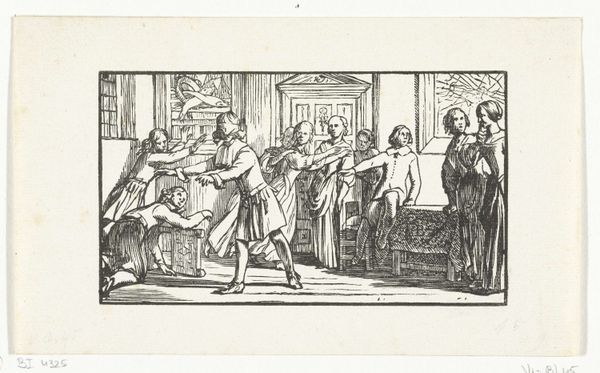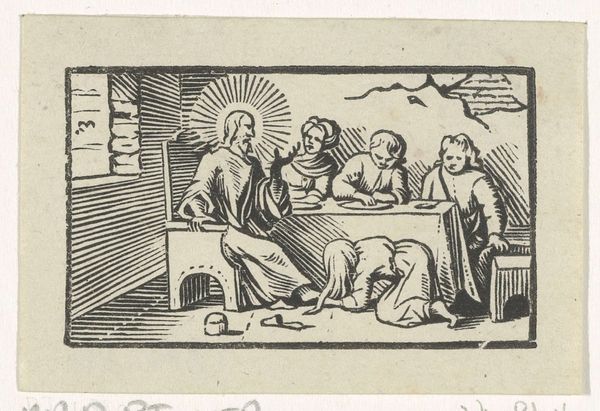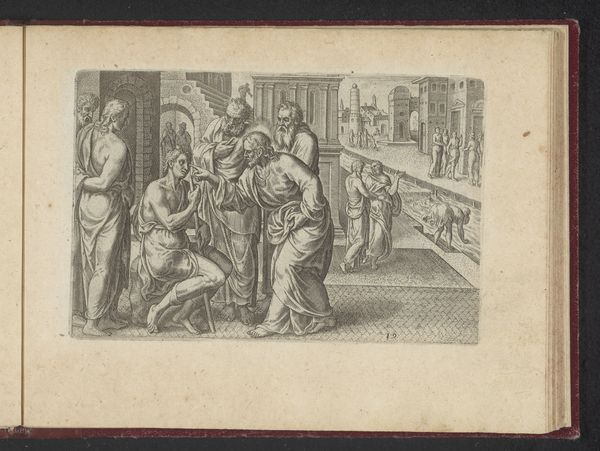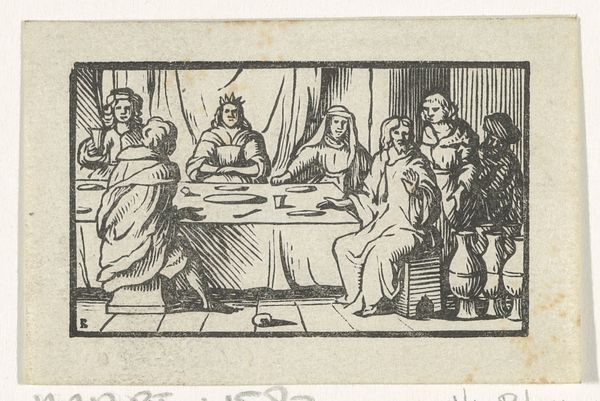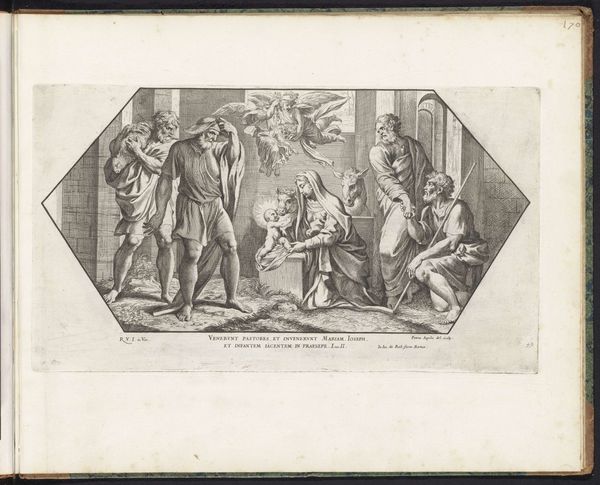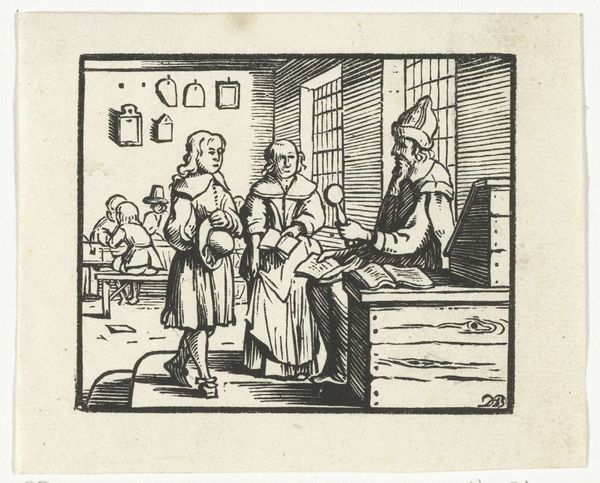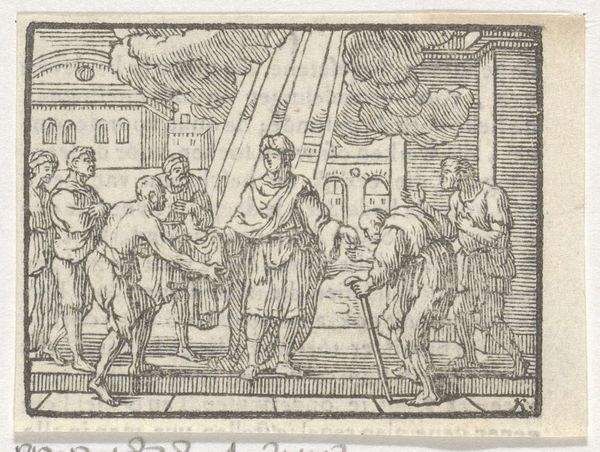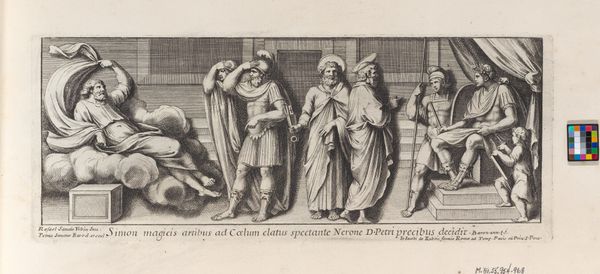
print, engraving
#
narrative-art
#
baroque
# print
#
figuration
#
history-painting
#
engraving
Dimensions: height 43 mm, width 62 mm
Copyright: Rijks Museum: Open Domain
Editor: This is Dirck de Bray's print, "Pilatus wast zijn handen in onschuld," made sometime between 1635 and 1694. The scene feels incredibly tense, with this very deliberate act of Pontius Pilate washing his hands. How do you interpret the social commentary within this historical moment captured in the engraving? Curator: The act itself, Pilate publicly cleansing his hands, is a powerful performance of detachment. It speaks volumes about institutional power, doesn’t it? De Bray depicts the precise moment when political authority seeks to absolve itself of moral responsibility. What message do you think this sends to its audience regarding the political power of images? Editor: I suppose it is meant to condemn not just Pilate but also the viewers who stand by idly while injustice occurs. It seems to encourage the viewer to examine his own responsibility toward society. Is this related to some trend in baroque art, though? Curator: Absolutely. The Baroque period was a time of intense religious and political upheaval. Artists used narratives, like this scene from the Bible, to reflect on contemporary issues of power, morality, and public responsibility. How do you see this work functioning within a larger network of religious imagery at the time? Do you think its message was widely understood and accepted, or could it have been interpreted in different ways depending on the viewer’s social or political affiliations? Editor: Thinking about the diverse audiences that could've viewed this print, it makes me wonder if this piece was intended to promote a specific political position or agenda. The role of religious art at this time was maybe not only to educate or illustrate but also to sway public opinion, maybe? Curator: Precisely. The visual arts often operated as tools for propaganda. Considering that, how does your understanding of this image evolve? Editor: That’s an interesting thought—it reframes how I see art of this period and reminds me to question whose perspective is being presented and why. Thank you. Curator: And I think understanding its political role really underscores how relevant images can be to society!
Comments
No comments
Be the first to comment and join the conversation on the ultimate creative platform.
